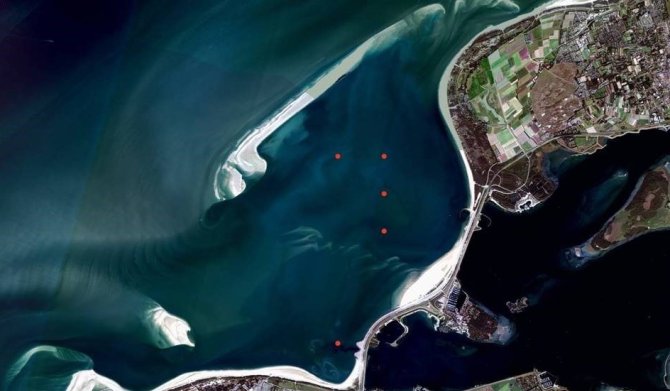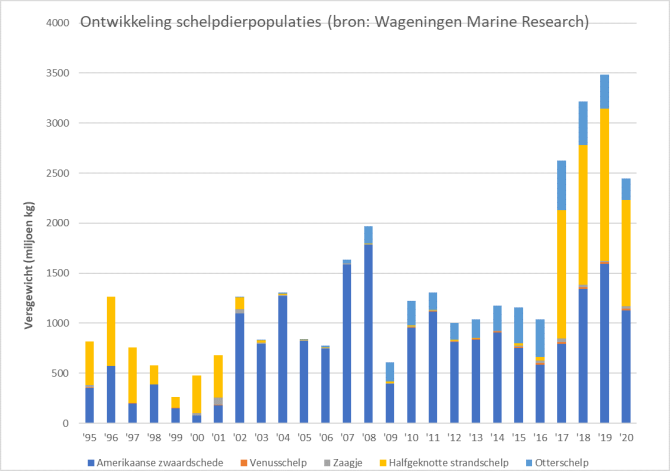
News
When does the file yoldia reach the Wadden Sea?
The file yoldia has been in the Netherlands for at least two to three years. Wageningen Marine Research recently found this exotic species during a survey of shellfish in the Voordelta; the most northerly location to date. According to marine ecologist Johan Craeymeersch, the question is not if, but how quickly this species will spread further. At some point, the bivalve will also be found in the Wadden Sea.
New species are increasingly being discovered when monitoring benthic animals in our salty waters, often bivalves. Examples are the dwarf surf clam (Mulinia lateralis), the Asian semele (Theora lubrica) and last year the file yoldia (Yoldia limatula). The first location of this last newcomer was in the Westerschelde, near the mouth in the Sloe area (see Nature News 7 June 2020). Some time later, after a storm, this exotic species was also found further south, on the beach on the west coast of Belgium. In mid-June 2021 both juvenile and adult specimens of the file yoldia were found in a sampling in the Voordelta, together with the dwarf surf clam.

File yoldia likes silty bottoms
In the Voordelta, this involved finding sites in Brouwerhavense Gat east of Aardappelbult, according to field observers Jetze van Zwol, Jack Perdon and Jesse van der Pool who were involved in this sampling. At this location, the soil is silty, and that is the sediment type preferred by the file yoldia. They process large amounts of sediment while feeding. Research in its original habitat, the Northwest Atlantic, showed that even at low densities, this species can have a huge impact on the benthic ecosystem. They can easily turn the sediment completely upside down twice a year. This activity - called bioturbation - is in principle positive for the proper functioning of the ecosystem, as it contributes to better oxygenation and processing of organic material. However, bioturbation can also have a negative impact on other benthic animals. For example, it has been described for the Wadden Sea that common lugworms can have a negative effect on the densities of juveniles of other species, including cockles, through bioturbation.
Importance of long-term studies
Shellfish monitoring shows the importance of long-term studies of biodiversity and ecosystems. In the coastal zone, populations of many species have increased (razor shells, striped venus shells, otter schells) or recently recovered (cut through shells, banded wedge shells) during the last decade. The total biomass of shellfish is now much higher than at the beginning of the shellfish inventory. Johan Craeymeersch and his fellow researchers from the shellfish team at the Yerseke Regional Centre are interested in the cause of this apparent increase in the carrying capacity of large waters.

Annual shellfish monitoring
The discovery of the file yoldia in the Voordelta was made during the annual shellfish survey of the Dutch coastal zone. The inventory is part of the statutory research task (WOT) for fisheries and is carried out annually by Wageningen Marine Research on behalf of the Ministry of Agriculture, Nature and Food Quality. The shellfish inventories were set up in the early 1990s. Hundreds of bottom samples are taken annually in all coastal waters. Recently everyone has been able to see the distribution and population trends of various species of shellfish (density and biomass) in the saline Dutch coastal waters in a simple way, via the Shellfish Monitor (wur.nl/schelpdiermonitor).